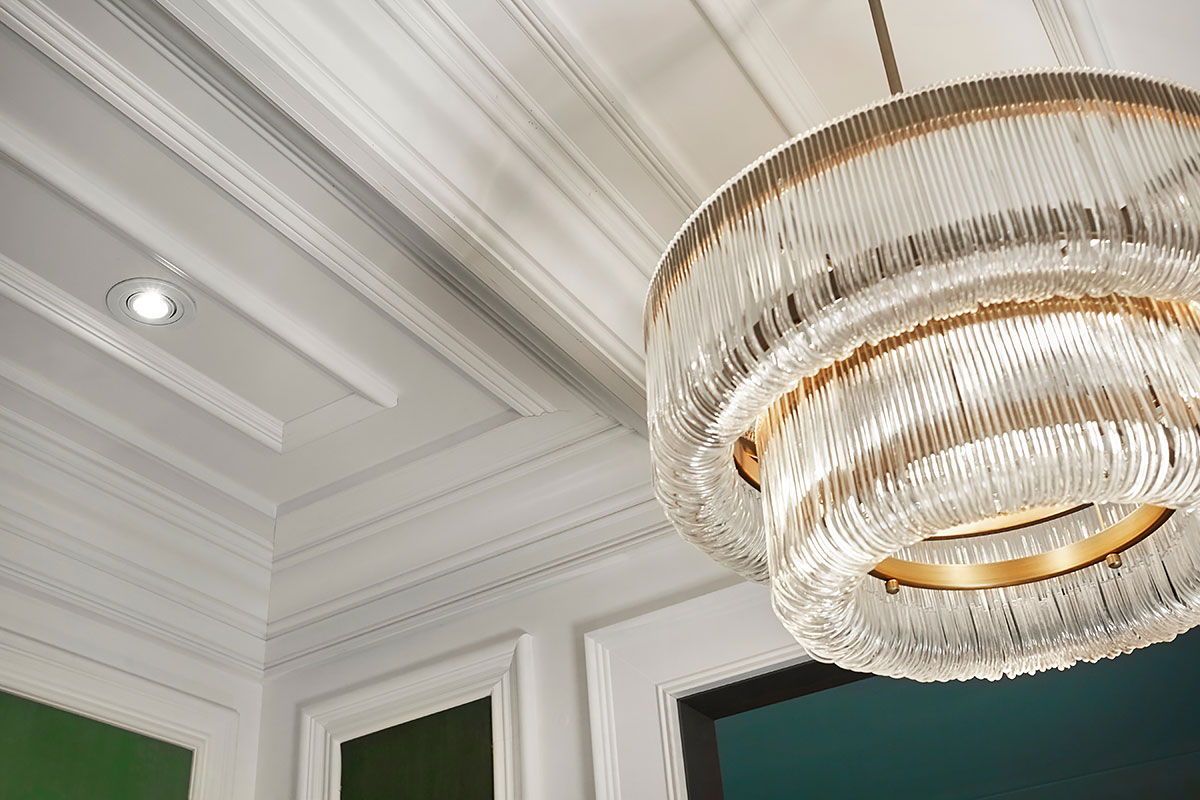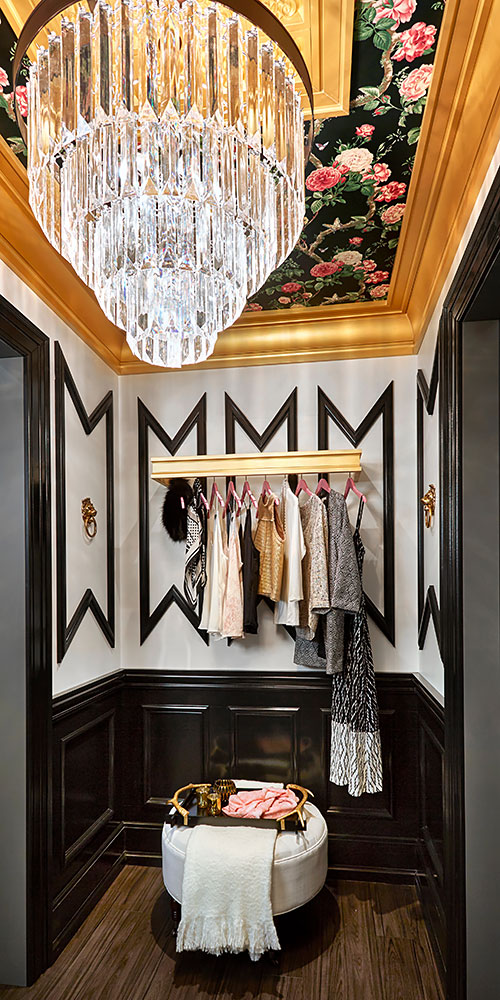When you first enter a room, whether you realize it or not, you are subconsciously taking in every small detail to create the larger picture. These details may not always be consciously noticed by viewers but they complete a room fully and provide us with an understanding of a space’s style and character.
Perhaps one of the most important elements to a room is trim work. This can include base boards, crown molding, window sills and casing. Since before the Renaissance, trim work has been used to signify wealth and to finish a room to its utmost perfection. Both affluence and influence has been tied to Interior design through-out history and specifically to wall decor and architectural features from Roman times onwards. Even with the early 20th century’s modern movement, Bauhaus, simple trim and unadorned details represent a style and signify a philosophy.

Why Add Crown Molding?
Crown molding, as the name implys, wraps around the top of a room finishing the wall and connecting it to the ceiling. A popular item today, crown adds height, creates a beautiful level line and visually separates the flat surface of the ceiling from the vertical wall. This provides a visual break and allows for applications of different materials and finishes on each of these surfaces. Crown is often considered an upgrade in resale so it’s a desirable element in residential design today.
Make sure if you are not handy, to find someone who is, as crown requires an understanding of how to cut compound mitre joints at corners. This is not a place where you want to take chances or you maybe buying more lengths than you thought!
Look for multiple crown sizes and designs at your local building centre as they will often stock all options on site.
If you are unsure of the size of crown to install, trim work has gotten beefier over time so 5″ to 6″ would be a good general option for standard ceilings of 8′ to 9′.
The Bottom Line on Base Boards
As is the case with crown moulding, the base board has a similar job: to cover the space where the wall meets the floor. Base boards have two parts; the actual board, and the rounded shoe moulding that runs along the edge of the floor. As with crown moulding, base boards also date far back and have been indicative of wealth. Houses built in the early part of the last century tend to have higher base boards and then, over time, home-builders started installing shorter and less decorative ones presumably to save money. Today, 7″ baseboards have become standard and often extend to 10″ for a richer look.

Door and Window Casing Designs
Casing describes the trim that wraps or “cases” the perimeter of windows and the doors. It is generally within the same style as your base boards for continuity. Like base boards, casing has become more pronounced with sizes ranging from 3.5″ to over 5″ wide rather than previous options of 2.5″ overall. And to add depth from the walls, casing often has another trim piece added to it called backband. This L-shaped piece is applied to the outside edge of the casing to make it both larger in width and depth. Again this gives a more rich and detailed feel to a room.
Ignored for the last 20 years or so except in well appointed traditional homes, we have seen the return of window sill trim. Previously, casing simply wrapped the window on all four sides. Now a horizontal trim piece with a decorative profile edge is added to the bottom of the window to create a sill and a piece of trim below it, called an apron. This detail reflects a return to elegant windows and a demand for higher attention paid to all areas of a room, showcasing craftsmanship and carpentry skills.
Trim work may be an area to which you haven’t devoted much time, assuming main decisions like wall colour or furniture matter more. But it’s details like the profile of a base board or the thickness of a window casing that subtly send a message about the style and quality of a space. Architectural details form the canvas of a room and further enhance anything placed within it. Take it from history, trim work matters as it tells your story from the walls out!
A company that we love is Metrie! They have everything you could possible need from trim to casings to doors and everything in between!

